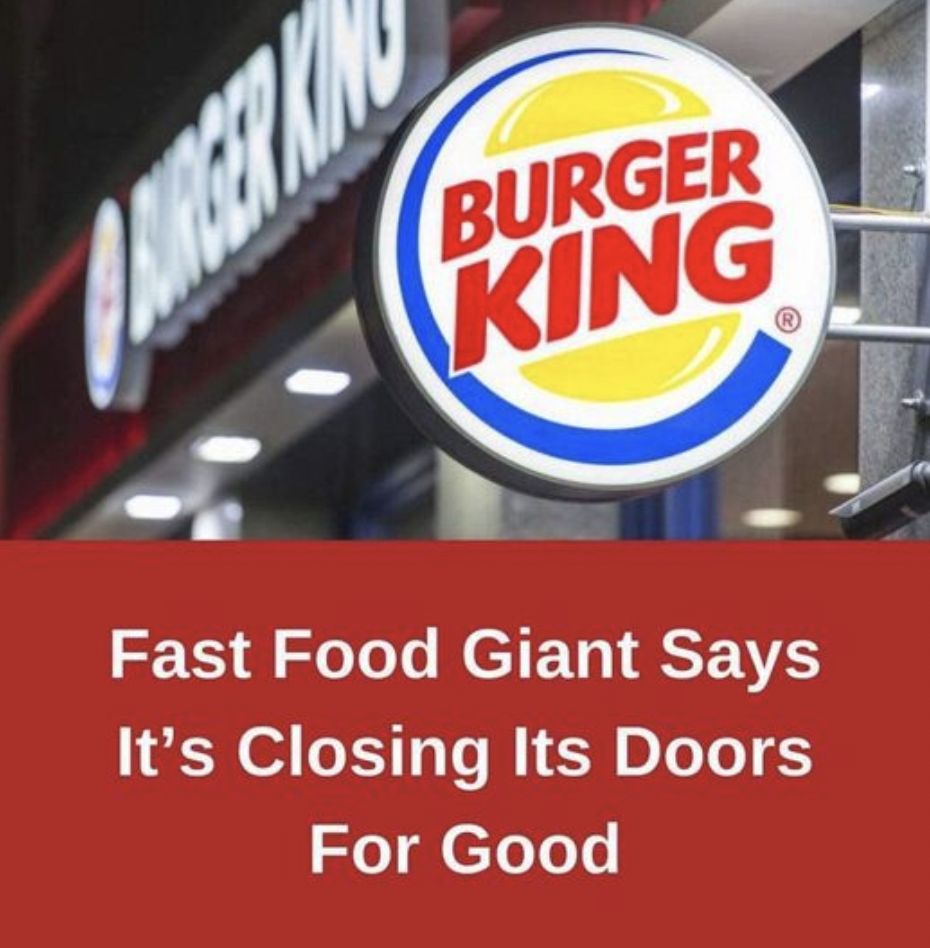Burger King, the well-known fast-food chain, has recently made a bold and adventurous decision to close many of its locations across the United States. This strategic move is part of the company’s larger plan to restructure its operations and undergo a complete rebranding.

Streamlining Burger King’s Network
Burger King has always been fearless in pursuing operational excellence. However, the closure of around 400 outlets in the United States marks a significant departure from the norm. As the CEO of Burger King, Joshua Kobza has emphasized the company’s unwavering commitment to meeting demanding operational criteria.
The goal is to empower franchisees to oversee restaurants that go beyond the ordinary and exceed performance benchmarks. In order to achieve this, Burger King is focusing its resources on nurturing and strengthening its successful outlets, while also assisting franchisees who are unable to meet the newly enhanced requirements in making a phased exit.
A Comprehensive Rebranding Strategy
Reducing its operational presence is just one part of Burger King’s larger strategy to revitalize its identity and enhance its reputation in a highly competitive fast-food landscape. In 2022, the company launched its ambitious “Reclaim the Flame” rebranding project, investing a significant $400 million to breathe new life into the brand.
This financial commitment is being used to revitalize the brand through inventive advertising campaigns, simplified menu offerings, and extensive renovations aimed at rekindling the brand’s allure. Burger King has allocated an impressive $50 million to give nearly 3,000 of its locations a complete makeover, encompassing everything from cutting-edge technology integration to culinary improvements that enhance the overall customer experience.
In order to stay ahead in the fiercely competitive fast-food industry, Burger King is embracing revolutionary concepts such as three-lane drive-thrus and innovative delivery methods, ensuring that it meets the evolving expectations of its customers.
Challenges and Prospects
While undergoing this transformative journey, Burger King will face a mix of internal and external challenges. The company has had difficulties in seamlessly implementing digitalization, particularly in managing the growing demand for online orders and doorstep deliveries. The introduction of experimental menu items, like the Impossible Burger, has also brought its own set of challenges that need to be navigated carefully.
However, amidst these strategic closures, there is a glimmer of hope in the form of an impressive 8.7% increase in comparable sales for the first quarter of 2023. This positive trend reflects the success of Burger King’s astute strategies, including a streamlined menu, thoughtful rebranding efforts, and targeted closures of underperforming locations.
In a market where it competes with giants like McDonald’s and Wendy’s, as well as emerging players like Five Guys and Shake Shack, Burger King’s strategic moves carry significant weight. The company is determined to regain its market share and redefine its position in the fast-food sector by embarking on a revolutionary journey that involves redefining its identity, refining its menu offerings, and creating immersive dining experiences.
A Transformation for Burger King
Burger King’s decision to close a significant number of locations goes beyond mere operational adjustments. This pivotal moment represents a delicate balance between brand redesign, operational streamlining, and an unwavering commitment to enhancing the customer experience.
This significant change is occurring at a time when the fast-food industry is undergoing a transformative shift in response to evolving consumer preferences. Burger King positions itself as an industry innovator, ready to challenge conventional norms and pave the way for an exciting new era. With its rebranding campaigns, investments in modernization, and intentional closure of underperforming locations, Burger King is poised for a remarkable rebirth.





